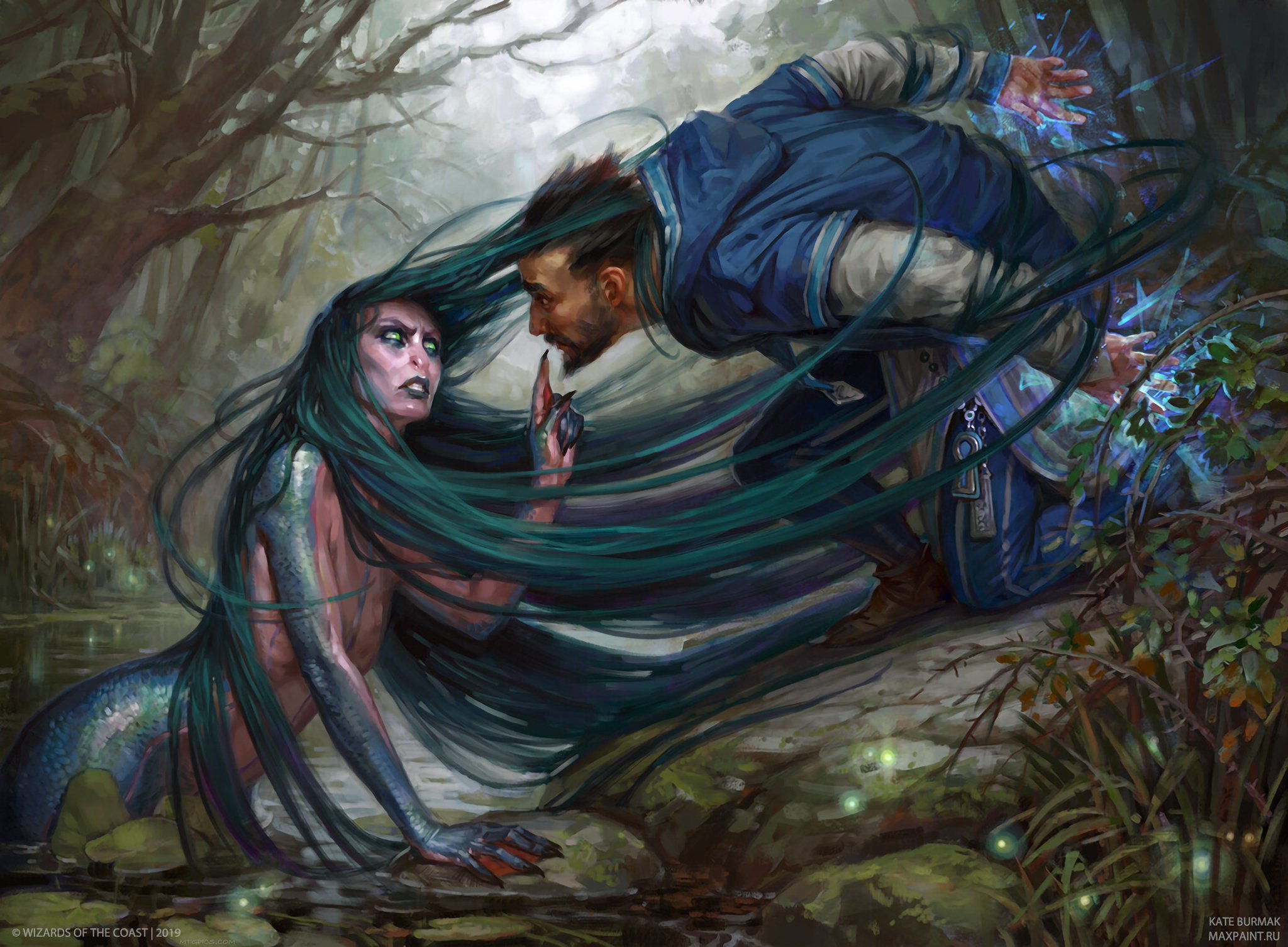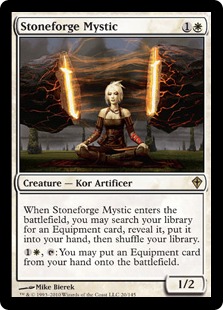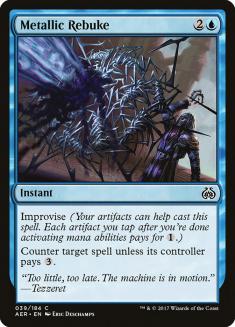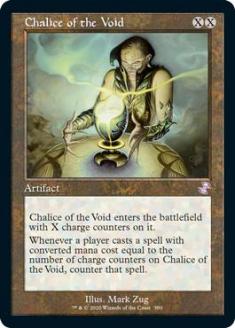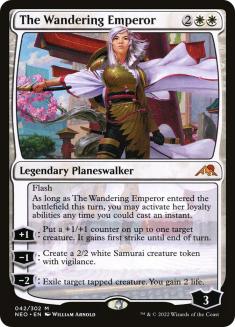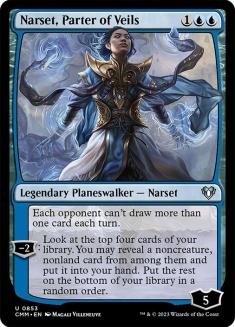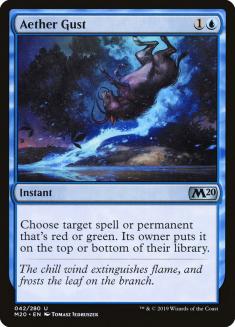I have gone back and forth between two flavors of Azorius for SCG CON Dallas. A couple of weeks ago, I wrote about Azorius Stoneblade featuring Stoneforge Mystic, who stole my heart many years ago.
With the introduction of Batterskull, I was hooked to that archetype in every applicable format for many years. Seeing its resurgence in Modern gave me hope that it was back in business. I soon built it online, started getting reps with it, and experienced the power of the deck.
Creatures (15)
- 4 Stoneforge Mystic
- 4 Urza, Lord High Artificer
- 2 Emry, Lurker of the Loch
- 4 Esper Sentinel
- 1 The Reality Chip
Lands (23)
Spells (22)
- 3 Aether Spellbomb
- 3 Mishra's Bauble
- 1 Sword of the Meek
- 1 Springleaf Drum
- 1 Relic of Progenitus
- 3 Thopter Foundry
- 1 Shadowspear
- 4 Portable Hole
- 1 Kaldra Compleat
- 4 Moonsnare Prototype
Sideboard

Each League finish was with a winning record, most ending at 4-1. The first two Leagues had run-ins against several mirror matches, or at least decks with many of the same core cards as mine. The value that this Azorius Stoneblade produces creates a deadly matchup for any deck trying to do the same.
I struggled against combo decks, as expected, but thrashed the value decks that could not compete on card advantage. Even when I fell behind against those decks, having the Thopter Foundry / Sword of the Meek combo made my win a given. Having that instant kill floating around in the deck makes Azorius Stoneblade special. It reminds me of the artifact-based control decks of old in Modern, playing the early-game with piles of permanents on the battlefield, yet having a game-ending combo hit them at a moment’s notice.
The weakness against combo decks was the first negative I identified while playing the deck. That issue was not an immediate red flag against Azorius Stoneblade, since the deck ran smooth as butter against the array of other matchups.
The one change that had to take place was removing all instances of Razortide Bridge, a card that should not see the light of Modern play again. While the upside from running artifact lands is huge, there is a required floor in Modern. While playing a deck with one-, two-, three-, and four-drops, each land must enter the battlefield untapped. I felt the pain of having one Razortide Bridge through League play, and dropping it helped improve the deck’s consistency.
Big mana decks turned out to be the second issue for Azorius Stoneblade, for similar combo-esque reasons.
Azorius Stoneblade has a lack of disruption, even with the appropriate colors to house them. I played a few counterspells in the sideboard, which were decent in these troubling areas. The issue was that I needed more, and increasing the total significantly hurt the consistency of the deck. Sideboarding required removing artifacts for non-artifacts, especially in matchups where the removal had to stay in. Including more disruption would require a complete remake of the Azorius Stoneblade maindeck.
With more time, I could have successfully tweaked the deck, but SCG CON Dallas is right around the corner. With the rise of Tron, Living End, and Temur Crashcade, I could not sleeve this deck up in good conscience. It is possible that these decks are popular on Magic Online (MTGO), yet will see little play this weekend. If that is the case, then I am making a mistake by switching to my backup deck. Luckily for me, the backup is as strong of an option, especially when considering my experience with it.
Creatures (4)
- 4 Solitude
Planeswalkers (9)
- 2 Jace, the Mind Sculptor
- 2 Teferi, Hero of Dominaria
- 3 Teferi, Time Raveler
- 1 Narset, Parter of Veils
- 1 The Wandering Emperor
Lands (21)
Spells (26)

The decision to move back to Azorius Control was a tough one, since I had decent success with Azorius Stoneblade. This control deck checks all the boxes for tournament success, including a strong matchup against combo decks. Having Chalice of the Void puts me back in the driver’s seat, as some decks instantly fold to one resolving.
The timing couldn’t be better, since Azorius Control and so Chalice of the Void are on the wane. There are two in the maindeck with one in the sideboard, though starting them all Game 1 may be correct. Its weakness against Four-Color Yorion is a reason to hold back some of that Chalice of the Void enthusiasm; however, it is very strong against most of the other decks in the field. I have crushed many Amulet Titan/Cascade decks by dropping a Chalice on zero Turn 1; light blue disruption in later turns was enough to finish the job. This format is ripe for the taking with some prison-lock assistance. Azorius Control has that power.
This list is like last month’s, shifted to match the expected metagame of SCG CON Dallas. I have opened my heart up to The Wandering Emperor after giving it a second shot in Azorius Control. My evaluation of it remains the same: it is slightly above average against certain decks and slightly below against others. That’s why I turned it down last time around, but I have changed my mind after further testing.
Due to its versatility across the matchup spectrum, with no truly bad scenarios, The Wandering Emperor has earned a slot in Modern control decks. Barring a shift away from planeswalkers in Azorius Control, it is possible that this card may remain as a permanent staple, due to its neutral (at worst) impact. It will never be as good as the team of Teferis, and suggesting it is better than Jace, the Mind Sculptor leans toward blasphemy. I have been happy with it as a one-of, complementing its planeswalker peers. It will be a part of the team this weekend.
Another one-of inclusion marks the return of Narset, Parter of Veils. This card has been missing in action for far too long, especially with the abundance of cantrips in the current Modern metagame. With Izzet Murktide, Four-Color Yorion, and a pile of decks with a hankering for card draw lurking around, Narset is prime for a strong resurgence.
There is only one spot for it right now, and it does come at the cost of reducing the Teferi, Time Raveler count to three. This has already been a trend for many Azorius Control players as they try to make room for the continuous waves of bangers that lately come out of each new set. The number of planeswalkers in Azorius Control differs slightly, but I think the number I am currently playing is optimal.
There are turns where a strong planeswalker following up disruption would immediately lock up the win. Therefore, Jace, the Mind Sculptor has erased the existence of Memory Deluge, with its game-ending impact possibility on arrival. Narset may be weaker than the bunch in a vacuum, but it is devastating to certain matchups that require their card draw to be successful.
The sideboard required some updating, to appropriately matchup against recent MTGO results. Even if the paper metagame has not shifted much, the cards I added have application against a variety of Modern’s threats. I changed the blue disruption some, adding extra copies of Mystical Dispute and Aether Gust. These two cards have a more powerful application against the metagame, providing a one-cost counterspell and disruption that cannot be prevented by a Cavern of Souls. Without the assistance of these specific spells, certain matchups would be too difficult to conquer.
Mystical Dispute has been a godsend against Four-Color Yorion, replacing Force of Negation. Although the latter is immensely powerful, Dovin’s Veto does a better overall job, and Mystical Dispute hits the most threatening creatures that it can produce. After the switch, the matchup became a bit easier and the sideboarded games felt favorable. These counterspells, joining Archmage’s Charm and Counterspell itself, make the blue disruption package a force to be reckoned with against the combo, big mana, and control mirror matchups. These join forces with numerous planeswalkers and instant-speed threats to push Azorius Control into fighting shape.
Aether Gust is a great card in Modern, and I wish I had room for more. If artifacts ever fell completely out of favor, the Fracturing Gust and the Stony Silence would likely part ways from the deck and make room. Currently, Aether Gust comes in to take care of business against red-based aggro, big mana green decks, and everything in between with a valid target. There has never been a card this versatile while also being immune to effects that create uncounterable spells. The moment you land this on a Primeval Titan summoned with mana from a Cavern of Souls, you are hooked.
The rest of the deck mirrors what I have played in the past. I am confident with it for this weekend. I love Azorius Stoneblade, and it can be a heavy hitter in the competitive Modern scene with work. Properly finding the balance between disruption and the artifact foundation is the key to solving that puzzle. After this weekend, I plan to continue to work on it for future events. In the meantime, I am excited to pilot the flagship control deck of Modern to victory in Dallas.

